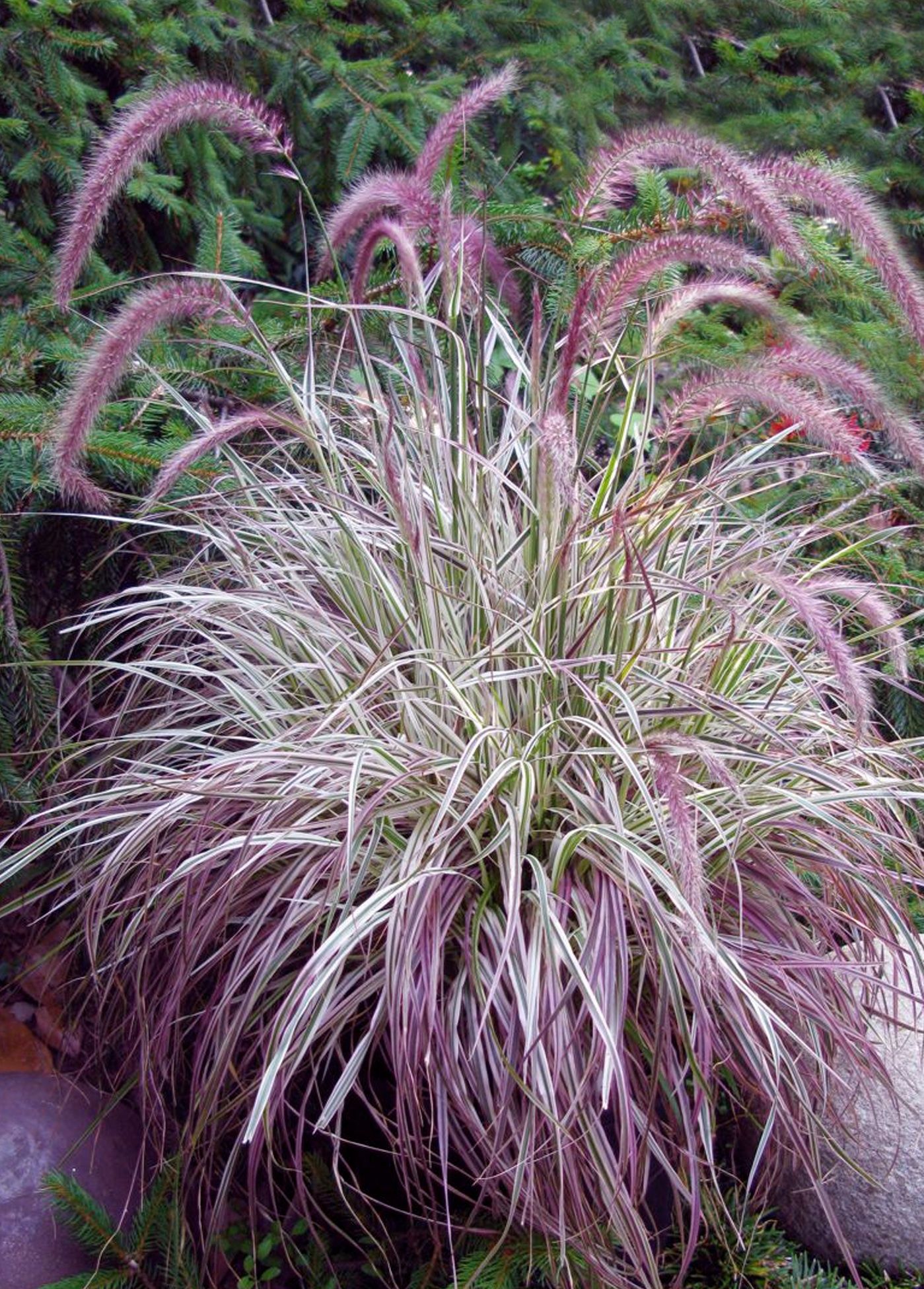
Pennisetum 'Cherry Sparkler' White and Pink Variegated Fountain Grass from ItSaul Plants
Dig a hole deep and wide enough to accommodate the root system. Remove the plant from its nursery pot and gently tease the roots. Place in the hole and backfill with the original soil. Water well after planting until the grass is established. Mulching around the base retains soil moisture and suppresses weed growth.

Purple Fountain Grasses for Sale
The Pennisetum genus includes a variety of ornamental grasses known for their soft, fuzzy flower plumes. Part of the Poaceae family, these plants are also commonly referred to as fountain grasses.The individual species include both annual and perennial varieties, ranging in size from large to small. The smaller varieties can be kept in containers for a beautiful addition to a patio or entranceway.
/purple-fountain-grass-2132874-hero-d5fb5c7f97094c18ac92b5a0d48e70fc.jpg)
How to Grow and Care for Purple Fountain Grass
Planting Fountain Grass Pennisetum. Growing purple fountain grass is best done in the fall or spring, but we recommend taking advantage of planting them in spring during the growing season. Planting purple fountain grass is considered a growth habit as these plants reach 5 feet tall at mature height.

Fireworks Fountain Grass offers variegated blades of longitudinal stripes that go from reddish
Buy Plants. Perfect for small gardens, Pennisetum alopecuroides 'Little Bunny' (Fountain Grass) is a miniature perennial grass forming a dense clump of gracefully arching linear leaves. Dark green in summer, they turn gold in the fall before fading to buff. The showy foliage usually remains attractive until frost.
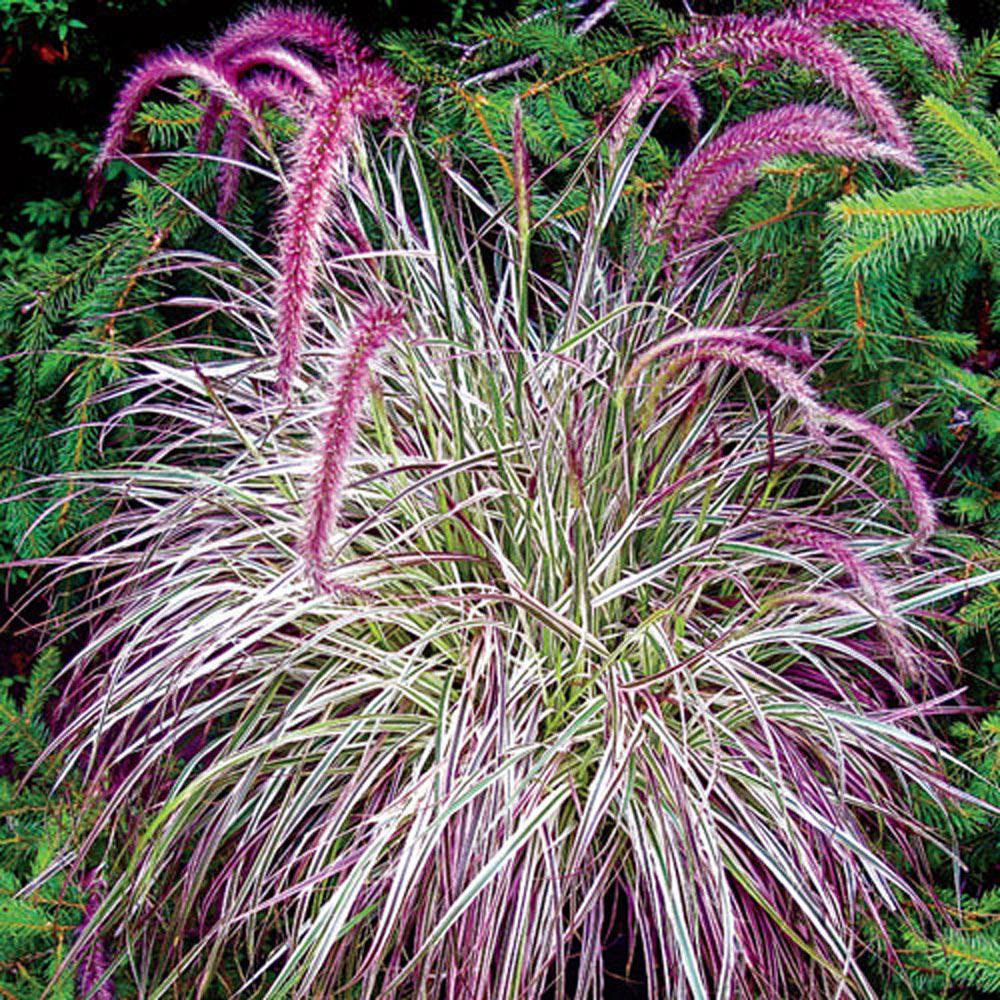
Spring Hill Nurseries 2 in. Pot Cherry Sparkle Purple Fountain Grass (Pennisetum), Live
Fountain grass height varies, with dwarf varieties reaching just 1 to 2 feet tall, while the largest varieties can grow to 6 feet tall or more. Be sure to read the label carefully before you buy. Is fountain grass a sun or shade plant? Fountain grass is a full sun plant, performing best with at least 6 to 8 hours of direct sun per day.

Fireworks purple fountain grass named La. super plant
Fountain grass does well in nearly any type of soil; however, for greater results, fountain grass should be planted in fertile, well-drained soil. Fountain grass enjoys full sun but tolerates some light shade. Look for areas receiving full sun, as these plants prefer warm conditions.

Learn How To Care For Fountain Grass Plants
Even fountain grass plants sold as infertile can be pollinated by fertile varieties and spread, the USDA warns. By rapidly outcompeting other species, fountain grass has diminished vital food and.

PlantWerkz Red Fountain Grass Pennisetum Rubrum
Dependable grass with beauty and versatility. Produces a clump of narrow, half-inch shiny green leaves that fade to golden yellow in fall. Valued for its flower spikes that are popular cut flowers. Showy single specimen or lined up for edging. Herbaceous. Water when top 2 inches of soil is dry.
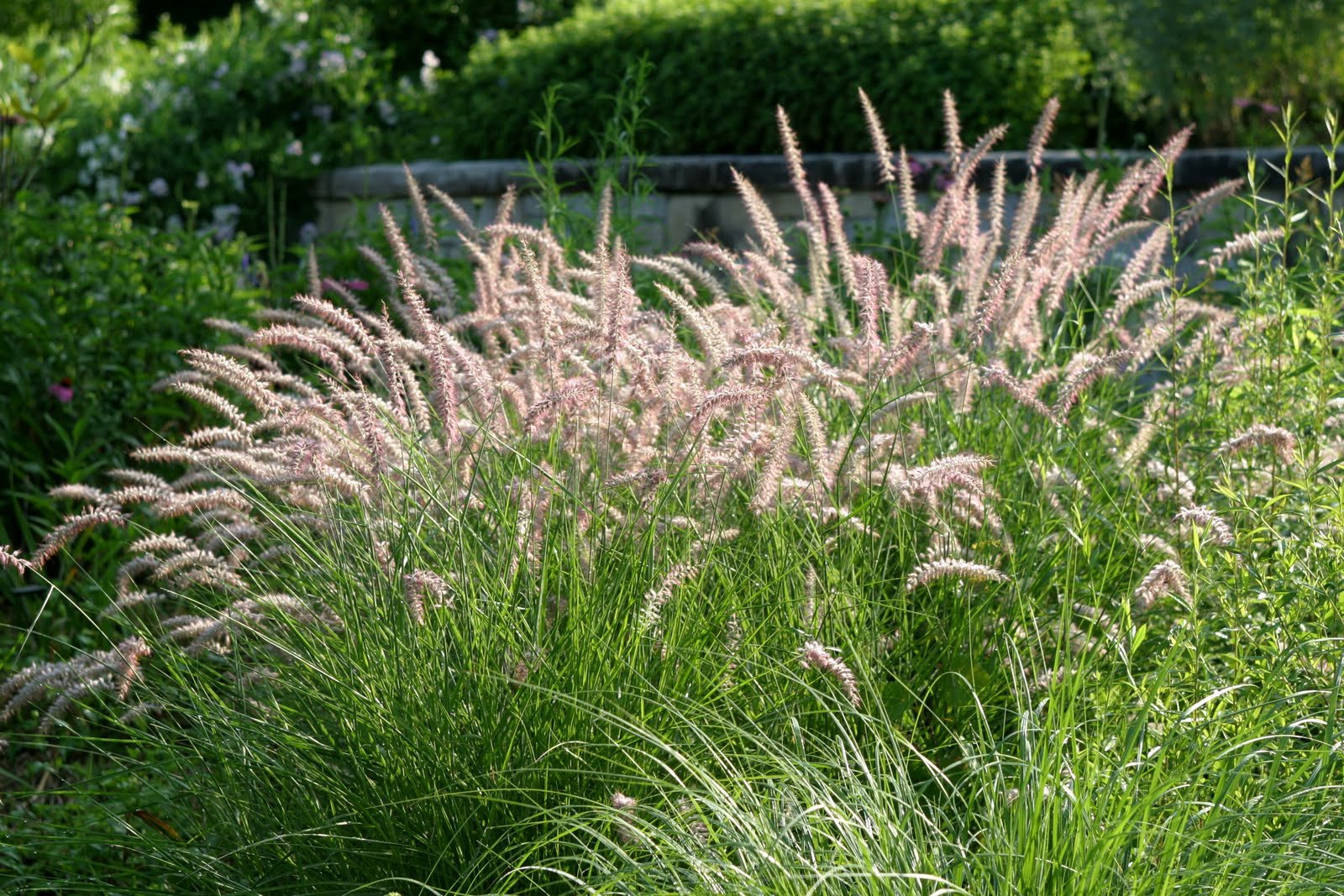
Fountain Grass Plant Profile Sylvan Gardens Landscape Contractors
Temperature and Humidity. These ornamental grasses are quite versatile in terms of temperature. They can grow well in colder zones with temperatures as low as 20 degrees F but are also heat tolerant. Fountain grasses typically grow in tropical regions and grow best at higher temperatures.
/purple-fountain-grass-big-579f7acf3df78c32768cd4c5.jpg)
How to Grow and Care for Purple Fountain Grass
Aside from being low-maintenance, there are many benefits to reap when you plant fountain grass. It's deer resistant, drought tolerant, and is a perfect ground cover to prevent soil erosion when used in a mass planting. Fountain Grass Care Guide. Most ornamental grasses grow without so much fuss. The same is true for growing fountain grass.

PlantWerkz Red Fountain Grass Pennisetum Rubrum
Pennisetum setaceum 'Fireworks': Another popular cultivar of the purple fountain grass species, this plant has variegated leaves with burgundy in the middle and hot pink at the edges. P. alopecuroides 'Burgundy Bunny': A cultivar of a relatively cold-hardy species of fountain grass in the Pennisetum genus, this variety stands 16 inches tall.

Princess Purple Fountain Grass Purple fountain grass, african fountain grass, fountain grass
Types of Fountain Grass . Fountain grass is recognizable for its long, thin leaves and fluffy flowers. "It features graceful, arching, narrow foliage and produces showy, bottlebrush-shaped flowerheads in late summer," says Justine Kandra, horticulturist at the Kemper Center for Home Gardening at the Missouri Botanical Garden. "There are around 15 named cultivars that range in height from 1 to.
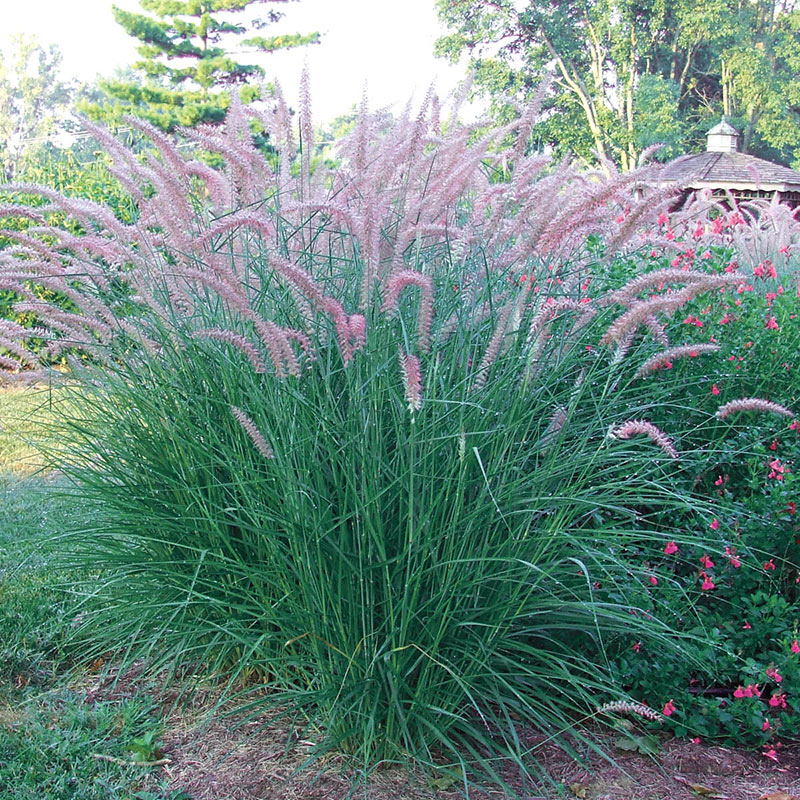
Enjoy Rose Fountain Grass Gurney's Seed & Nursery Co.
Native to Asia and Australia, Pennisetum alopecuroides (Fountain Grass) is among the most beautiful and graceful ornamental grasses with its cascading foliage that rustles in the wind. Requiring very little care and providing almost nonstop drama in the garden. This cold-hardy grass typically grows in 2-3 foot tall (60-90 cm) rounded mounds of dark green foliage turning golden yellow or beige.

Love my purple fountain grass Fountain grass, Xeriscape plants, Plants
Fountain grass, P. alopecuroides, is a perennial ornamental grass, with various cultivars hardy from zone 4 or 5 through 10. This warm season grass native to meadows and open woods, alongside streams of Eastern Asia (mainly China and Japan) and Australia has finely textured foliage and elegant form. The leaves and flower spikes swaying in the.
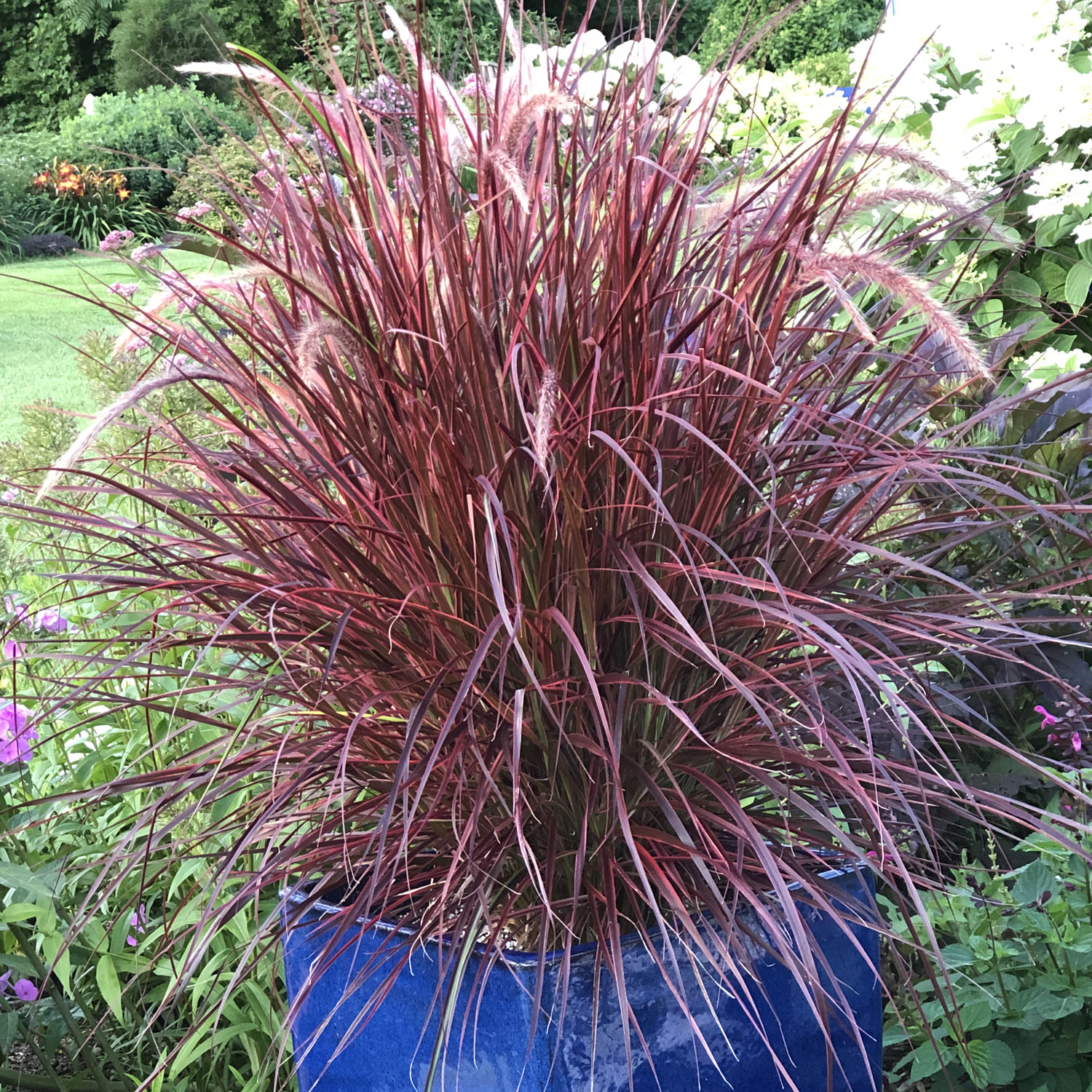
Pennisetum GRACEFUL GRASSES Fireworks Buy Fountain Grass Annuals Online
Plant care: Fountain grass grows well in full sun and moist, well-drained soils, but tolerates some drought. This is a warm season grass, so its most active growth occurs in summer. It will remain standing in winter and can act as winter interest, although the seed heads will begin to shatter in autumn. Since this grass remains attractive.
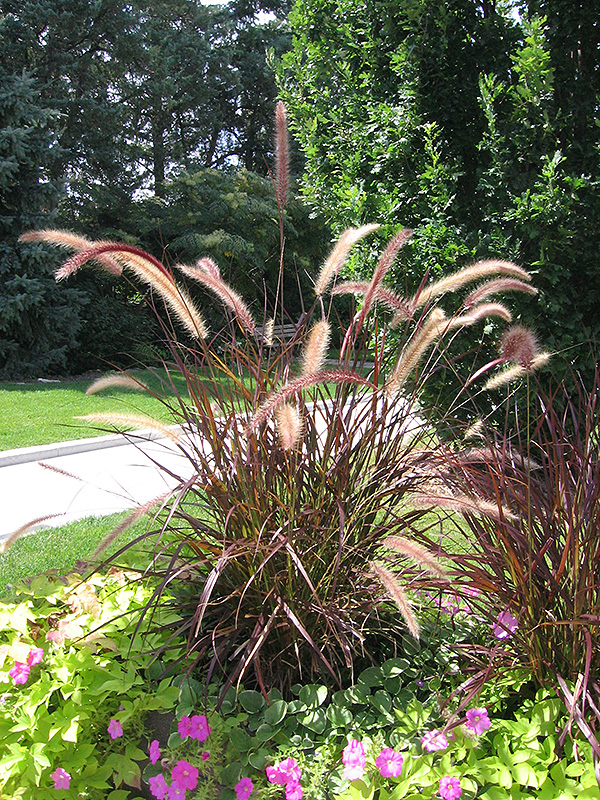
Purple Fountain Grass (Pennisetum setaceum 'Rubrum') in Oklahoma City Edmond Norman Moore
if you want to grow fountain grass from seed, you may sow in early spring indoors. Fill three- to four-inch pots or 10-by-20-inch trays with a fertile seed-starting mixture. Sow one to two seeds per pot, or space seeds three to four inches apart in trays. Just barely cover the seeds with soil.